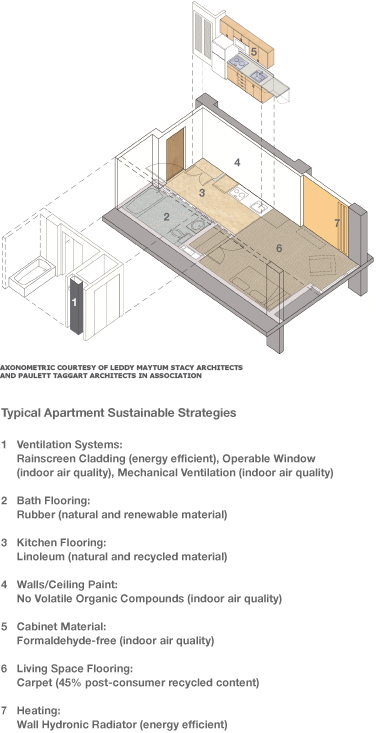
Secure
A sense of safety and well-being
A healthy interior environment minimizes respiratory risk factors and asthma triggers.
When asthma symptoms and triggers decline, a family’s quality of life improves. Use of natural finishes and furnishings reduces exposure to toxins through the skin and the air.
The National Center for Healthy Housing lists a number of healthy design strategies. (Green Housing Series: A New Prescription for Asthma Sufferers: Healthier Homes)
- Air-tight construction with insulated windows and foundations minimizes the intrusion of dust, pollen, and other contaminants. Air-tight construction also reduces moisture penetration and inhibits mold growth.
- Positive ventilation removes stale air and filters incoming fresh air.
- Filters must be changed periodically to ensure that the ventilation system is working properly.
- Hydronic heating systems, which use hot water instead of forced air, reduce airborne particulates.
- Window blinds instead of curtains to reduce dust.
- Linoleum in lieu of carpet to reduce the collection of dust.
- The use of low volatile organic compounds (VOCs) paints, caulking and sealants.
- Low/no off-gas trim and cabinets to reduce urea formaldehyde bonding agents.
- HEPA filter vacuums to remove allergens.
- Walk-off doormats to reduce dirt in the home.



At the Plaza Apartments, an affordable housing development in San Francisco, finishes are simple and durable, including formaldehyde-free wheat-board casework, linoleum kitchen floors, high recycled content carpet and paints without volatile organic compounds.